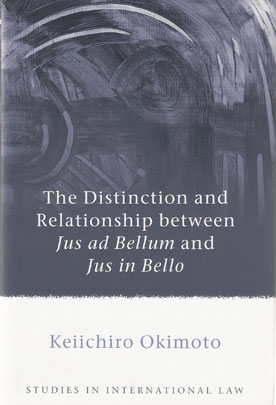
This book explores the distinction and relationship between two principal branches of international law regulating the use of force: jus ad bellum (when force can be used) and jus in bello (how force can be used).
Two principles traditionally govern the relationship between the two: 1) separation of jus ad bellum and jus in bello and 2) equal application of jus in bello to the conflicting parties.
These principles emerged in response to the claim that a conflicting party using force illegally under jus ad bellum should not benefit from the protection for victims of armed conflict under jus in bello, which would completely defeat the humanitarian purpose of jus in bello to protect all victims of armed conflict impartially.
There is, however, a third principle: concurrent application of jus ad bellum and jus in bello. Unlike in the past, jus ad bellum now regulates the use of force during a conflict alongside jus in bello and hence, the two are now considered as one set of rules applying during a conflict. The book explores in detail the interaction between the two.
The relationship between the two has been principally discussed in the context of the use of force in self-defence and international armed conflict. However, this book examines the relationship in other contexts of a very different nature, namely the use of force under Chapter VII of the United Nations Charter, non-international armed conflict, and armed conflict of a mixed character.
The book concludes that the three principles governing the relationship are equally valid, with certain variations, in these different contexts.